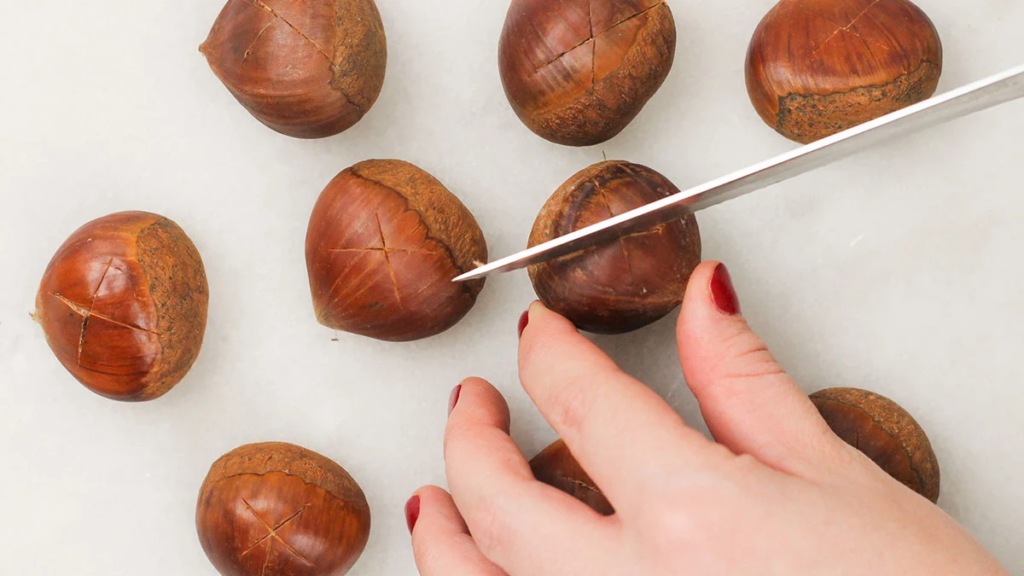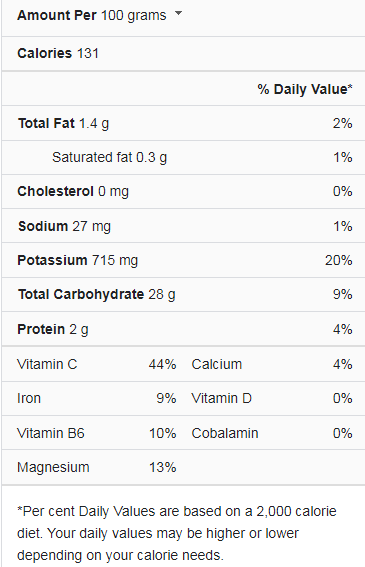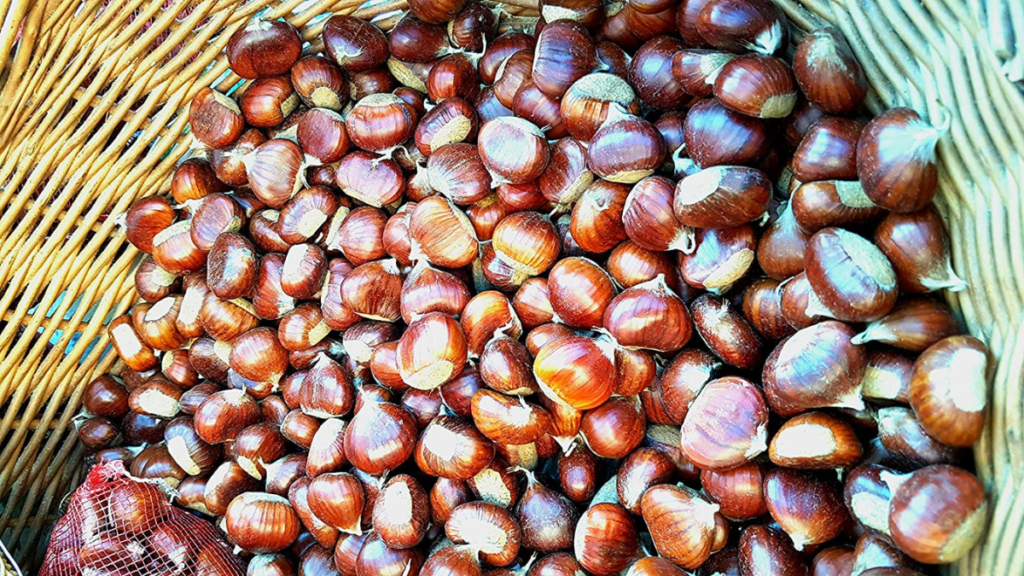Chestnuts resemble fruits more than genuine nuts since they are low in fat and high in vitamin C. Before eating, the prickly husk and the dark brown shell must both be removed. Chestnuts have been used as food for countless years. They can be combined with pastries or eaten raw, roasted, crushed into flour, or eaten raw. Many species in this group can survive an amazing 500 years or more, and they are found on Castanea trees. The Chinese chestnut, Japanese chestnut, European chestnut, and American chestnut are the four primary species of the chestnut tree.
The trees were formerly able to grow in a much smaller area before people started transplanting them; they are native to numerous locations throughout the world. The American chestnut tree was once widespread in the eastern United States, but a fungus outbreak in the early 1900s nearly wiped it out. The bulk of chestnuts sold in grocery shops today come from the Castanea sativa, also known as the European chestnut.
What are Chestnuts?
Castanea trees, which are deciduous trees that thrive in Europe, North America, and Asia, produce chestnuts as their edible fruit. They are one of the few nuts, along with hazelnuts, that are fruits rather than seeds. All everything except peanuts, which are legumes.
The European chestnut, Castanea sativa, commonly known as the Spanish chestnut or sweet chestnut, is the most popular kind and is traditionally consumed during the holiday season from Thanksgiving through New Year. Chinese, Japanese, and North American chestnuts are also grown for food. Chestnuts develop in inedible prickly husks in clusters of up to seven nuts each.
Each nut has a flat side and a rounded side due to the way they are compressed together within the husk. The interior of the nut is smooth, lustrous, and dark brown in color. Although chestnuts can be consumed fresh, they are typically cooked using methods including roasting, boiling, steaming, deep-frying, or even microwaving. Once cooked, they have a delicate texture and a flavor reminiscent of sweet potatoes that is mild, buttery, and sweet.
Chestnut Nutrition Facts
Health Benefits of Chestnuts
Due to their high vitamin C content, chestnuts stand out among nuts. In fact, half a cup of raw chestnuts provides 35 to 45 percent of the daily recommended value for vitamin C. Chestnuts still contain between 15 and 20% of your required daily intake of vitamin C even after being boiled or roasted.
To keep more vitamin C while cooking, chestnuts can be roasted at lower temperatures or dried in a food dehydrator. Chestnuts are a good source of antioxidants even after cooking. Gallic acid and ellagic acid, two antioxidants whose content increases when cooked, are present in significant concentrations in them. Other benefits of chestnuts for health include:
Encourage Heart Health
Your risk of cardiovascular problems like heart disease or stroke can be decreased with the aid of antioxidants and minerals like magnesium and potassium. These nutrients can improve your heart health, and chestnuts are a rich source of them.
Boost Digestion
Chestnuts might also aid in bettering your digestive system. These nuts are a wonderful source of fiber, which promotes regularity and the development of good bacteria in your digestive system. Additionally gluten-free, chestnuts are a good option for those with celiac disease.
Regulate Blood Sugar
Chestnut fiber can assist in maintaining a healthy blood sugar level. Consuming foods high in fiber helps your body absorb carbs gradually. This aids in preventing blood sugar spikes, which are risky for diabetics. Additionally, chestnuts have a low 54 glycemic index rating. When you eat foods with a lower glycemic index rating, your blood sugar levels won’t be significantly affected.
Great Source of Antioxidants
Your eyes’ retinas store the final two antioxidants, which guard them against blue light toxicity. Antioxidants are substances that aid in defending your cells from harm from unstable molecules known as free radicals. Oxidative stress is a condition that can be brought on by high free radical levels.
These can raise the chance of developing chronic illnesses like cancer, diabetes, and heart disease. Additionally, studies have demonstrated that a number of antioxidants present in chestnuts, including gallic and ellagic acid, may improve insulin resistance, lessen the risk of heart disease, and inhibit the growth and spread of malignancies.
Boost Immune System
Chestnuts are a great way to strengthen your immune system because of the high concentration of vitamin C and other antioxidant substances they contain. In addition to promoting the generation of white blood cells, vitamin C also functions as an antioxidant, scavenging the body for free radicals and neutralizing them before they may modify healthy cells or create oxidative stress close to essential organs. This can aid the immune system in concentrating its defenses against infections and averting disease
Prevent Diabetes
The important role that dietary fiber can play in the control, prevention, and management of diabetes is not widely known. Chestnuts and other foods strong in dietary fiber are low glycemic foods, which indicates that they raise blood sugar levels more gradually than foods high in the glycemic index do. This aids in preventing the peaks and valleys in blood sugar that can be hazardous for diabetic patients and frequently signal the onset of the disease in individuals who are not yet affected.
High in Fiber
A good source of fiber with many health advantages is chestnuts. One benefit of fiber is that it gives the weight of your stool, which facilitates their passage and may help you maintain regularity. Additionally, the fiber in your diet functions as a prebiotic in your colon where it mostly goes undigested. This means that the beneficial bacteria in your gut, which ferment fiber, use the fiber as food. Short-chain fatty acids are one of the many beneficial substances that are created when the fiber is fermented by gut bacteria.
These short-chain fatty acids have a lot of advantages. They may improve blood sugar regulation, reduce inflammation, and gut health, according to studies. Last but not least, fiber does not increase your calorie intake because it generally goes through your body undigested. Instead, it helps you feel fuller without increasing your calorie intake, which may aid in weight control.
May Improve Blood Sugar Control
It’s crucial for your health to keep your blood sugar at a healthy level, but it’s crucial if you have diabetes or prediabetes. This is because people with diabetes may experience health concerns if their blood sugar levels remain high for an extended period of time. The blood vessels and organs may be harmed as a result of these issues. Chestnuts offer a number of intriguing qualities that might help with blood sugar regulation.
Chestnuts are a rich source of fiber that can help reduce blood sugar increases despite having more carbs than most other nuts. Additionally, research has revealed that chestnut antioxidants like gallic and ellagic acid may boost insulin sensitivity, making your cells more receptive to insulin, and help control blood sugar levels. Chestnuts are still regarded as a higher carb nut, though. While eating a little to moderate amount of chestnuts may provide these advantages, regularly eating too many chestnuts may have the opposite effect.
How to Prepare Chestnuts?
Look for raw chestnuts in grocery shops from October through December when they are at their most nutrient-dense and freshest. They are sold in a lot of supermarkets, specialty shops, and farmers’ markets. Although some American farmers also plant European chestnuts, the majority are grown in Italy. Because raw chestnuts have a lot of bitter tannins, you could decide to roast them first. As a result, they become sweeter and contain more sugar. Here are some suggestions for preparing and consuming chestnuts:
- Chestnuts can be blended and then added to heated pancakes or crepes.
- Use roasted chestnuts in place of croutons in a salad.
- On baked acorn or butternut squash, add chopped, roasted chestnuts.
- Make candied chestnuts, often known as marron glacé in France.
- Chestnut flour can be used to make pound cake.
How Many Chestnuts Should I Eat?
10 roasted chestnuts provide 17 percent of your daily requirements, which is a significant benefit considering that the majority of us don’t get nearly enough. Americans consume half the recommended daily intake of 25 to 30 grams of fiber, or approximately 16 grams, on average. Most people can safely eat raw chestnuts. They do, however, contain tannic acid, which means that if you have liver disease or frequently encounter renal issues, they may irritate your stomach, make you feel queasy, or even harm your liver.
Chestnuts are rich in fiber, which may aid with weight loss by reducing hunger and slowing down food digestion. Due to their reduced fat content compared to other types of nuts, they also have fewer calories. The majority of people can safely consume American chestnuts in the quantities found in food and beverages. The safety of American chestnut in the higher doses normally used as medicine is unknown. Certain malignancies, renal and liver damage, and stomach and intestinal issues are possible side effects of American chestnut.
Is Chestnut Good for Weight Loss?
Chestnuts are rich in fiber, which may aid with weight loss by reducing hunger and slowing down food digestion. Due to their low-fat content, they also have fewer calories than other types of nuts. Chestnuts resemble fruits more than genuine nuts since they are low in fat and high in vitamin C. Before eating, the prickly husk and the dark brown shell must both be removed. For thousands of years, chestnuts have served as a source of nourishment. Chestnuts have several nutritional traits with cereals in terms of their composition.
They do not contain gluten, however, they do contain a lot of carbohydrates, particularly starch. In addition to being high in fiber, chestnuts also contain significant amounts of potassium, phosphorus, and trace amounts of iron. Water chestnuts, also known as singhara, are a non-starchy, low-calorie fruit that has no fat and may aid in weight loss. A highly popular fruit that grows underwater in the autumn and winter is the water chestnut, also known as singhara in Hindi.
Can Chestnuts be Eaten Raw?
Due to the presence of tannic acid, fresh chestnuts must always be roasted before use and are never consumed raw. Either boiling or roasting the chestnuts will release them from their skins. They are lethal. However, unless you consume a lot of horse chestnuts, you are more likely to become ill than to die from them. According to the website of Canada’s Nova Scotia Museum, horse-chestnut poisoning seldom results in death, although symptoms can include vomiting, loss of coordination, stuttering, and occasionally paralysis. Prepared chestnuts should be put into a pan with cold water and heated to boiling.
Until the flesh is soft and easily separates from the shell, simmer for 15 to 20 minutes. The whitish larvae of chestnut weevils (Curculio spp.) consume the flesh of the nuts as they grow. The lesser or larger chestnut weevil is most likely to be to blame if tunnels are discovered inside the nuts. A mineral found in water chestnuts called potassium has been related to lowering blood pressure. According to a 2013 review, increasing potassium consumption may assist hypertensive individuals in lower blood pressure.
Conclusion
Fresh chestnuts are more perishable than most nuts because they have higher water content. Until you’re ready to use them, keep them in a container that is airtight in the refrigerator. They will keep for a few months in appropriate storage if you purchase them straight from the grower soon after harvest. The grocery store chestnuts likely spent some time outside and started “curing,” or losing some of their moisture. Although this really provides for better eating, drying makes the nuts more perishable.
Use store-bought chestnuts within a few weeks and instantly refrigerate them. Chestnuts that are still fresh can be frozen for up to six months. When kept out of direct sunlight and at room temperature, dried chestnuts survive for many months. To keep insects and moisture at bay, store them in an airtight container. Chestnuts that have been dried can be crushed into flour or reconstituted in boiling water for use in baking.




